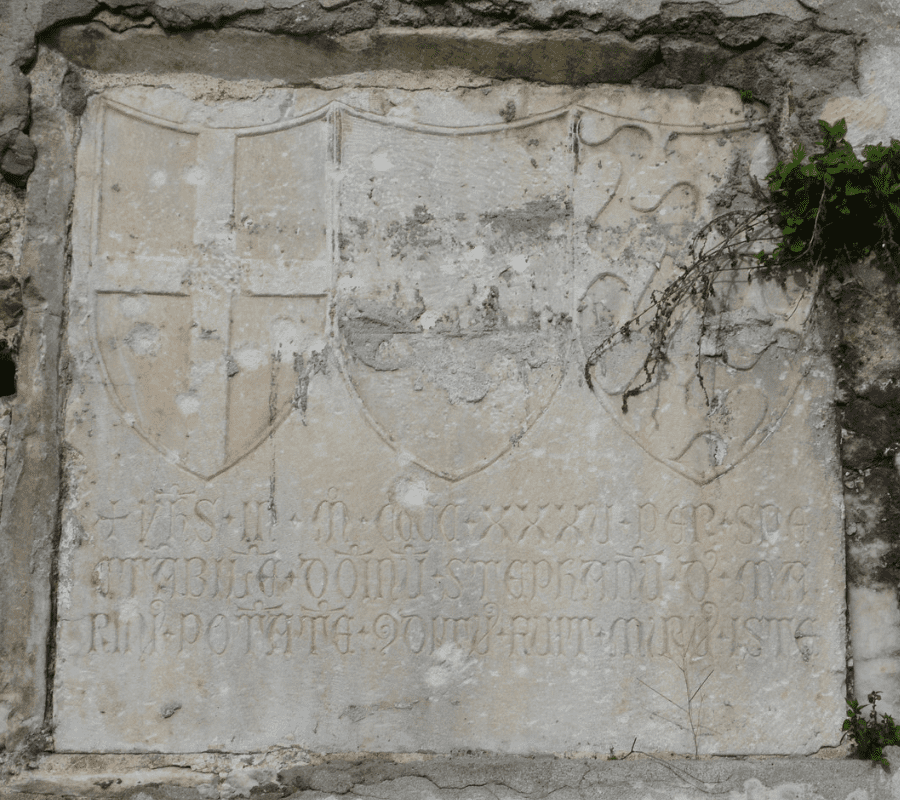Istanbul Landmarks: Galata Tower
Introduction
Galata Tower is one of the most prominent landmarks of Istanbul. It is situated on a hill in Galata, and you can see the historical peninsula of Istanbul 360 degrees. The origin of the Galata Tower dates back to the fifth century CE when the Byzantines built a wooden tower named Megalos Pyrgos (Great Tower) to control the city of Constantinople and Golden Horn. Due to the fires, earthquakes, and the Sack of Constantinople by the Fourth Crusaders in 1204, the wooden tower was utterly destroyed. In 1348, the Genoese community living in the Pera (Galata) district built today’s Galata Tower and named it Christea Turris (Tower of Christ). Galata Tower is a cylindrical tower made from stone, and it is approximately 67 meters long. Galata Tower was the tallest building in Istanbul until the construction of Beyazıt Tower in 1749. During the Ottoman period, the Galata Tower functioned as a jail, observatory house, and watch tower. After the restoration in 1960, Galata Tower was commercialized and opened to the public. Today, the tower functions as a 360-degree viewing platform of Istanbul.

The tower was the focus of the Genoese fortifications of Medieval Galata. Known initially as Galata Tower, the “Tower of Christ”, it was built in 1348 in connection with the first expansion of the Genoese Colony. The first fortified area, walled in as early as 1304, was a long, narrow rectangle along the Golden Horn between today’s two bridges over the Golden Horn. On the 17th C, an Ottoman citizen, Hezarfen Ahmet Celebi, attempted to fly from Galata Tower to the Asian Shore of Uskudar, and he worked on his project for years. With the wings he invented, he succeeded in flying to his target, and this was a great success of that time. It was used as an observation tower and constituted an important part of their defense system. It was used as a fire observation tower till the 1960s and later restored and converted into a tourist attraction.

The observation deck is spectacular, it gives one the opportunity of a 360 degrees of vision. It is 61 meters, 183 ft. tall. The tower is extremely robust and has a diameter of 16.45 meters (54.0 feet) at the base and a diameter of 8.95 meters (29.4 feet) on the inside. The walls were built to make it impossible to penetrate the tower because they are 3.75 meters (12.3 feet) thick!
Location
From the deck, one can observe the Asian Side, the highest point of Istanbul, the Bosphorus, the Bosphorus Bridge, the harbor for the cruise ships, the Golden Horn, the old Galata settlement with relatively poor neighborhoods, the Suleiman’s Mosque, Hagia Sophia, Blue Mosque and the Topkapi Palace, the Spice Market, the New Mosque, the Halic (Golden Horn) settlements, the new part of the town, Beyoglu (old Pera) and so on…To see Istanbul’s four different sides, one must visit the tower. It is being restored but still open to visit.

Galata is located in Istanbul, where the Golden Horn meets the Bosphorus. The Galata bridges spanned the two shores of the Golden Horn. The name Galata comes from ‘gala’, which in Greek means milk. It is presumed that the many dairies in the district lent the place this name, although there is no historical evidence. It could also have come from the Italian word ‘calata’ or ‘the road leading down to the sea’, possibly because of the slight slope of the section between Tunel and the shores of Halic. The region of Galata was famous for its several Latin Catholic churches. Most of these, however, were destroyed by fires, so you may not see any. Galata also has an abandoned synagogue built by a Jewish banker and many mosques built during the Ottoman era. Galata has always been famous for its confluence of many cultures – where people from many religions and races got shelter. The warm, tolerant, and democratic environment of Galata is symbolized by the structure of its most famous landmark – the Galata Tower. (Read detailed history at the end of this page)
History
Galata Tower, one of the major landmarks of modern Istanbul, was built in the mid-14th century when the Genoese had a settlement at Galata. This tower, which dominated the region’s topography, functioned as something like the keep of the Genoese fortification system of Galata. The first phase of construction of the Walls of Galata perhaps first began in the early 14th century and continued to be expanded and reinforced until shortly before the Ottoman conquest of Constantinople in 1453. The 8th-century Fort of Galata was included in the Genoese fortifications by the late 14th century. The local municipality began to demolish much of the walls in 1864, though several sections of the walls, along with several towers and a gate, still survive.

Sykai, as Galata was known in antiquity, probably received its first fortifications in the 5th century. However, they were traditionally attributed to Constantine I. Justinian I (527-565), who restored Sykai and its walls, which was then Justinianopolis. Whatever remained of these walls was destroyed when the Byzantines granted the area to the Genoese in 1267, shortly after they recovered Constantinople in 1261. The earliest borders of the Genoese quarters are uncertain. Still, the limits of the quarter were delineated in 1303 – officially granting a relatively long, narrow strip of land along the southern shore of Galata. Before receiving the land grant, the surviving fortifications of Galata were demolished, except for the Fort of Galata, which would remain in Byzantine hands for the next century. A series of attacks followed this land grant, eventually resulting in the Genoese building fortifications to protect their quarter. In 1296, during the Byzantine-Venetian War of 1296-1302, a Venetian fleet set fire to the buildings of the defenseless Genoese quarter at Galata while its inhabitants sought refuge behind the walls of Constantinople. Following their arrival in Constantinople in 1303, the Catalan Company was involved in a conflict with the Genoese, allegedly resulting in the death of 3000 Genoese. While Andronikos II managed to stop the Catalans from pillaging Galata, this threat further emphasized the Genoese’s need for security. An agreement between the Byzantines and Genoese in 1304 allowed for a moat and fortified civil buildings to provide security in their quarters. It strictly prohibited fortified walls but allowed for other buildings, including a slaughterhouse, marketplace, loggia, baths, church, and weigh house.
It is unclear exactly when the Genoese began to build the walls of Galata. By 1308, the Genoese were purchasing land beyond the borders granted by the emperor. They built a series of fortified houses that were converted into defensive towers with windows modified into arrow slits. Much of the quarter, including the Palazzo Comunale, burned down in 1315 and was rebuilt in 1316. During this time, it seems that proper fortified walls were also built despite the prohibitions of previous agreements. During a secondary construction phase, a small rectangular castle was built on the western flank of the Palazzo Comunale by 1335. During that time, other fortifications were being built north of the quarter, determined by previous agreements. It also seems that the heights of the walls were increased during this phase of construction. Following their occupation of Mytilene in 1333, the Genoese began to expand their quarter at Pera illegally. In 1336, when Andronikos III recaptured Lesbos from the Genoese, the emperor ordered these walls to be demolished, though it is unclear how well was this implemented. While they were permitted to purchase adjacent vineyards, the Genoese continued to expand and fortify their quarters far beyond this area, towards the hill where they would build Galata Tower (known as the Tower of Christ) in 1348. The area around Galata Tower was probably enclosed with walls the following year.

This secondary phase of the construction of fortifications also corresponds to the civil war between John V Palaiologos and John VI Kantakouzenos in 1341-1347 and the war between the Genoese and Byzantines over customs duties in 1348-1349, during which the imperial fleet was destroyed, and a major fire broke out in Galata. In 1351, the Byzantines unsuccessfully attempted to capture Galata. The next primary construction phase of Galata’s walls took place after the Byzantine fleet was defeated by the Genoese in 1352, which concluded with a treaty officially extending the Genoese quarters of Galata to the east.
It is uncertain when the Fort of Galata was handed over to the Genoese, though it was undoubtedly by 1384. Eventually, the fort was linked to the walls of Galata, during which time it might have also functioned as an arsenal. It is generally held that the Genoese acquired the northwestern district in 1387, the western district Spiga in 1397, and the eastern district Lagirio around 1400. However, evidence suggests that the Genoese controlled Spiga by 1351 and Lagirio by 1376. Repairs to the wall in 1390-1391 were likely made in expectation of an Ottoman attack, though the blockade of Bayezid I halted defensive constructions until 1435. An unsuccessful Ottoman siege of Galata occurred in the late 14th century and again in 1411 and 1422. The Milanese occupation of Genoa in 1421-1435 likely slowed the addition of defensive construction. The last known pre-Ottoman slab records work was in 1452, supported by Pope Nicholas V (1447-1455), who was of Genoese origin.

Galata surrendered to the Ottomans in 1453 following the conquest of Constantinople. While Mehmet II promised that the fortifications of Galata would be spared, several sources mention that he ordered the walls to be demolished. However, there is little evidence of any significant Ottoman reconstruction, and the walls were extended mainly until the late 19th century. Perhaps the textual references to the destruction of the walls only refer to a symbolic destruction of the upper sections of the walls, which would limit their defensive function. The earthquake of 1509 caused the upper levels of Galata Tower to collapse. Galata would suffer from a sequence of fires and earthquakes over the next few centuries, though damage it caused to Galata’s walls was not recorded. The local municipality began demolishing the walls in 1864, though the walls were well-documented before this began. The total number of the wall’s gates is unclear, but it had at least 6 maritime gates (some of which were linked to piers). A total of 25 gates of Galata Walls were recorded with their locations and names in the Ottoman period of Galata. Today, only a few sections of the walls, some towers, and a gate survive.
Story of the First Flying Man in the History

One of the most remarkable facts about the Galata Tower is that it was probably the sight of the earliest intercontinental flights in history. According to Ottoman historian and traveler Evliya Çelebi, Hezarfen Ahmet Çelebi flew with self-made wings from the top of the tower to the other end of the Bosphorus around 1630-1632. By doing so, he didn’t just cover a distance of about 6 kilometers (4 miles) but also successfully flew from Europe to Asia! First, he practiced by flying over the pulpit of Okmeydanı eight or nine times with eagle wings, using the force of the wind. Then, as Sultan Murad Khan (Murad IV) was watching from the Sinan Pasha mansion at Sarayburnu, he flew from the very top of the Galata Tower (in contemporary Karaköy) and landed in the Doğancılar Square in Üsküdar, with the help of the south-west wind. Then Murad Khan granted him a sack of golden coins and said: “This is a scary man. He is capable of doing anything he wishes. It is not right to keep such people,” and thus sent him to Algeria in exile. He died there. A Turkish movie made in 1996 related to this story called “Istanbul Beneath My Wings.”











